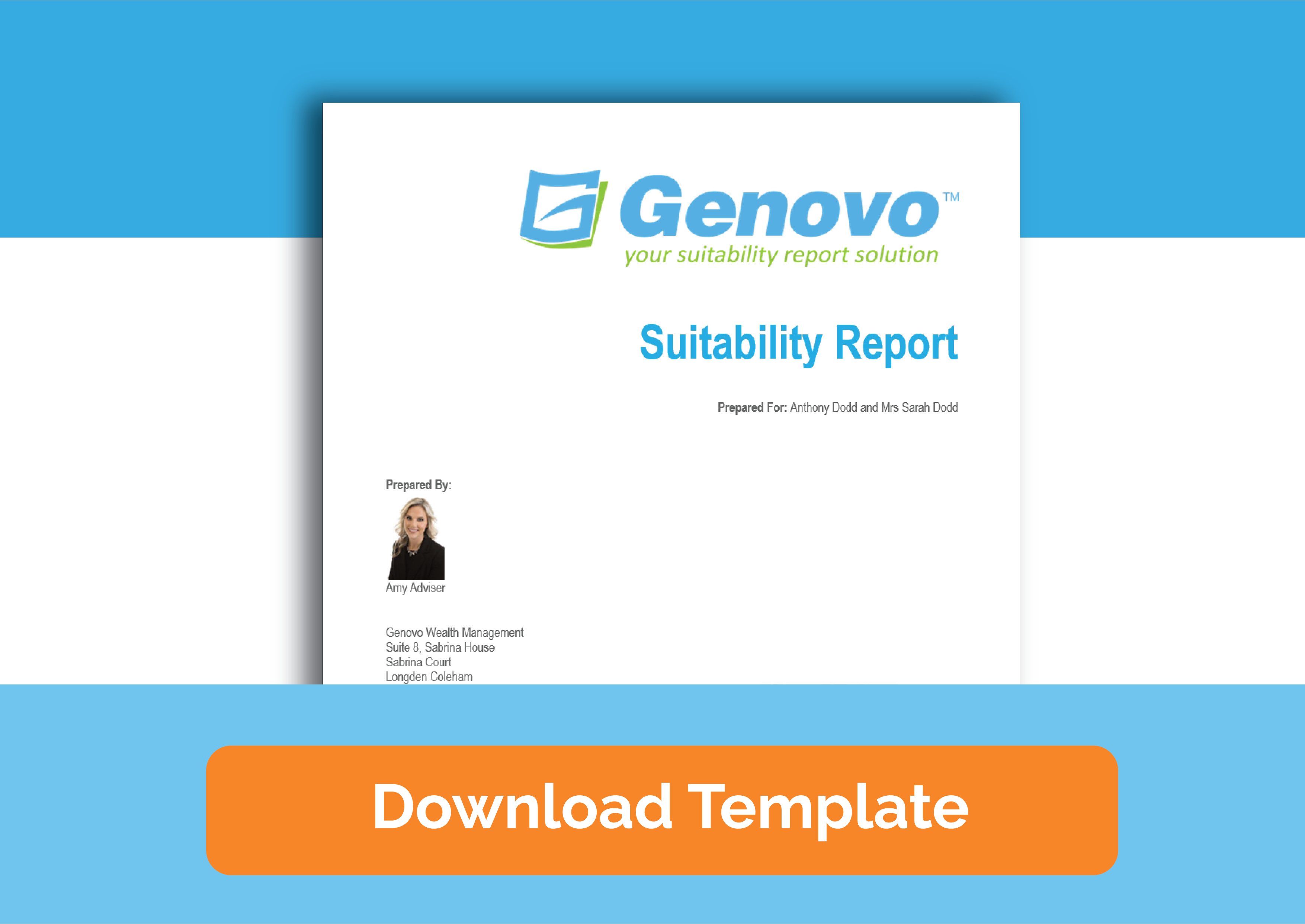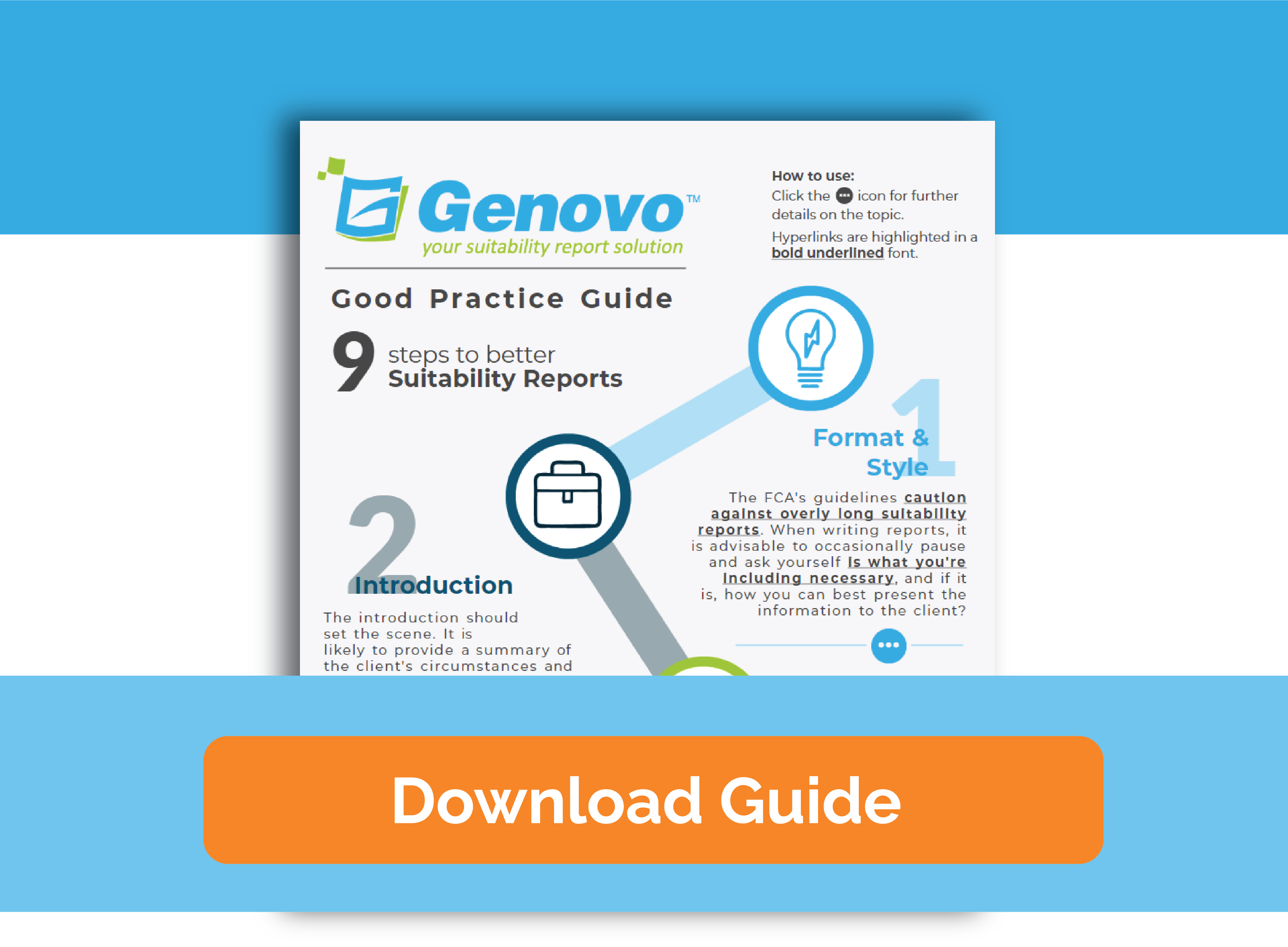
Overview of Genovo’s Report Types
Kate Wells
 |
IMPORTANT – This user tip relates to an older version of Genovo. Although much of the content and many of the concepts still apply to the current version of Genovo, the screenshots and some instructions may no longer be accurate. |
Following on from last month’s user tip blog when I looked at the different methods you can use to create the initial framework for a report, this month I thought I’d look at the different types of reports that are available in Genovo.
When you create a new report ‘from scratch within Genovo you are prompted to select a Report Type.

Each report type has been designed to cater for a slightly different advice scenario, and the report type selected will determine:
- Which sections are available in the Report Builder;
- Which steps show in the Wizard Sections included within the Report Builder;
- Which recommended actions show in the recommended action step of the review sections; and
- Which snippets (i.e., content) get included in the resultant report.
The Report Types
So, let’s have a look at the different report types in a bit more detail…
Suitability Report
The suitability report is the most commonly used report type. It has been designed to ensure you fulfil all of the regulator’s expectations of you when recommending a new product for a new or existing client, and / or replacement business. You can access virtually all of the report sections that are available within Genovo via this option; and it is thus the most comprehensive option, covering virtually every possible advice scenario.
Here’s what the Report Builder looks like as standard for a suitability report.

Review Report 2.0
This is our second-generation review report. It has been designed to allow users to provide an existing client with a holistic review of their financial affairs, as well as their existing investments as part of an annual (or more frequent) review service. It has also been designed to meet all of the requirements of MiFID II reporting. It can include:
- An update on the client’s circumstances.
- An update on the client’s assets and liabilities.
- A review of the client’s attitude to risk.
- A detailed review of the client’s objectives.
- A summary of the key outputs / outcomes following a review of the client’s cash flow plan.
- A review of the client’s existing plans
- Ex-ante and / or ex-post charges disclosure in line with MiFID II reporting requirements.
- A review of your service so you can demonstrate the value you have provided to the client over the past twelve months / since your last review.
- Any next steps and action required by you or the client.
- An authority to proceed.
- Relevant product and technical notes in the appendix.
To find out more about how to write a Review Report 2.0 click here.
Here’s what the Report Builder looks like as standard for a Review Report 2.0.

Fund Switch Report
Of course, it’s possible to recommended a fund switch within a suitability or review report within Genovo. However, if all you’re recommending is a fund switch or change of investment strategy then the Fund Switch Report will streamline the report writing process and result in a more concise and reader-friendly report covering all of the pertinent points.
To find out more about how to write a Fund Switch Report click here.
Here’s what the Report Builder looks like as standard for a Fund Switch Report.

Top-up / Bed & ISA Report
In much the same way as the fund switch report, it’s possible to recommend a top-up to a client’s existing investment(s) / pension(s), or a bed and ISA within a suitability or review report. However, if literally all you’re looking to recommend is a top-up, bed & ISA or both, then the Top-up / Bed & ISA Report is going to be a much slicker and concise option.
To find out more about how to write a Top-up / Bed & ISA Report click here.
Here’s what the Report Builder looks like as standard for a Top-up / Bed & ISA Report.

Continued Suitability Report
The Continued Suitability Report is shorter and more product focused than the Review Report 2.0. It has been specifically designed to fulfil the requirements of MiFID II reporting where there has been no change in the client’s investment objectives and you solely wish to confirm to the client the on-going suitability of their existing investment(s). It can include:
- An update on the client’s circumstances.
- A review of the client’s attitude to risk.
- A review of the client’s existing plans with recommendations to retain because they remain suitable for the client.
- Ex-ante and / or ex-post charges disclosure in line with MiFID II reporting requirements.
- A review of the service you have provided to the client over the past twelve months / since your last review.
- An adviser / client declaration.
To find out more about how to write a Continued Suitability Report click here.
Here’s what the Report Builder looks like as standard for a Continued Suitability Report.

Kate’s Key Takeaways
Here’s a couple of tips that are based on common support queries.
- If you realise part way through building a report that you’ve selected the wrong Report Type you can easily change it. Just follow these six simple steps.
- And if you’re ever unsure as to which sections, steps, recommended actions or snippets are included for a particular report type, then the ‘Other Useful Matrices’ article which you’ll also find in our Knowledge Base under ‘Getting Started’ will help a lot with this.
Well, that’s it for another month. I hope you’ve found this blog useful but if you do have any further questions, you know where we are.
Further Reading
You’ll find loads more really useful information in:
- Genovo’s series of User Tip blogs;
- the extensive Genovo Knowledge Base;
- the collection of really useful Genovo matrices;
- the ever-popular Genovo video tutorials; or
- by attending one or more of our regular monthly training webinars.
Of course, if you’re still stuck, or just need a helping hand, you can always submit a support ticket and we’ll get straight back to you.

